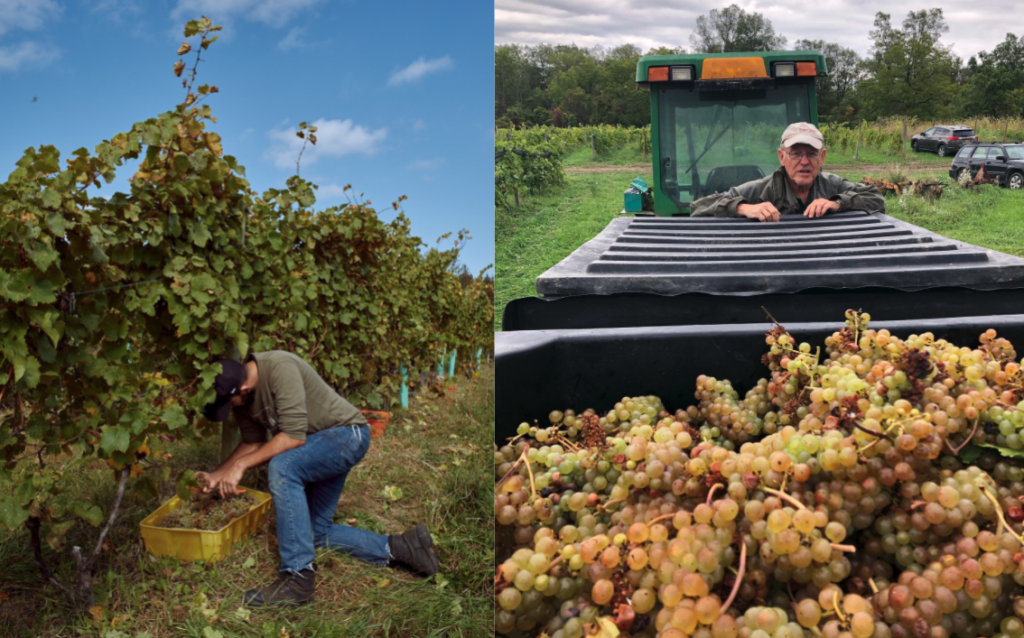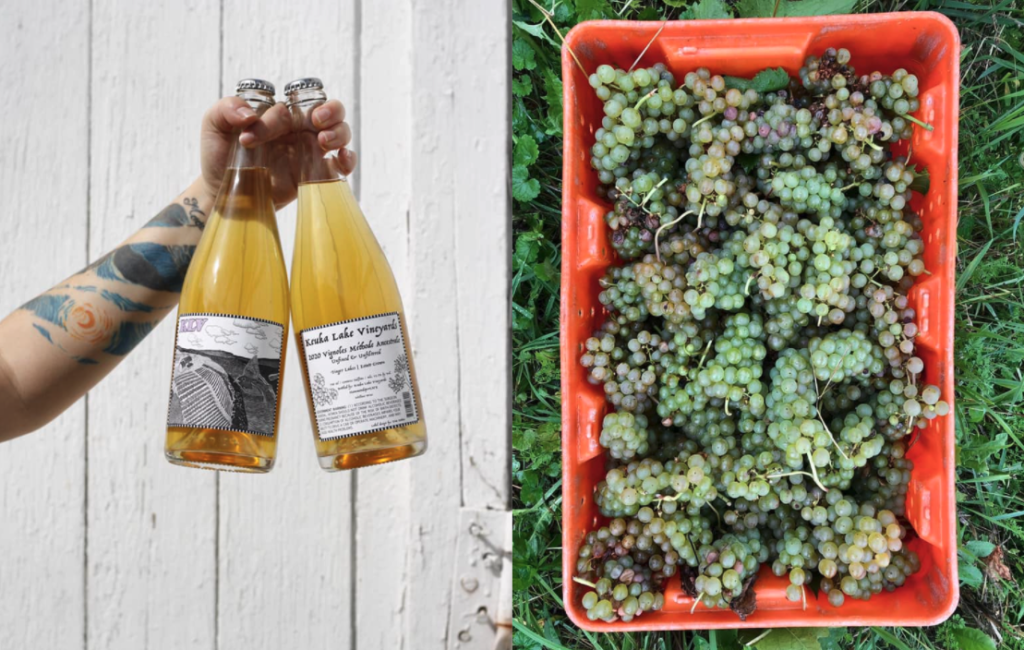Mel Goldman believes in luck. Since college he’d always wanted to grow grapes and over the years he and his wife, Dorothee, would travel and explore their options. At one point, they almost moved to Oregon (where Dorothee’s family is from) but found it cost prohibitive. It was on a family camping trip to Ithaca that Mel and Dorothee stumbled upon the Finger Lakes. Unplanned tours of Cornell University and Ithaca College with the kids made them pause: “we looked around and said ‘Wow, grapes!’ And, it was affordable.”
The Goldmans began looking for land in the Finger Lakes, finding their perfect property within a year. On that same day, a spring nor’easter caused road closures and grounded flights along the length of the East Coast, stranding them in Hammondsport at the Park Inn; it was later named the “1993 Storm of the Century”. Mel and Dorothee were struck by the kindness of the hotel manager who kept them warm and fed at no cost. They took it as a warm welcome to the neighborhood.
Nearly 30 years later, Keuka Lake Vineyards is home to 35 acres on the south east and west slopes of the lake. The vineyards are maintained sustainably, without herbicides, with minimal intervention, and harvested entirely by hand. Though the land might have been deemed too rocky or steep by others, Mel saw it as an opportunity.

While Mel believes in luck, he also believes you won’t get anywhere without pushing it. He considers himself “reasonably skeptical” when he hears something can’t be done; crediting his success to experimentation. “[It’s] how we’ve improved gradually, and our hope for the future is not only to maintain quality but to improve upon it.” You can see this in practice in many ways, like in his dense plantings of Léon Millot, which were originally farmed by Charles Fournier over 70 years ago. Mel’s decision to farm the hybrid grape with the same level of attention and care as his vinifera led to Léon Millot becoming a cult-favorite, and even taking home Best Red Wine in the 2011 New York Wine & Food Classic.
Pushing forward
“Luck in any kind of food and beverage world is not so serendipitous,” says Katie Cochrane, Cellar Master and Marketing Manager. “It’s figuring out the best move with the options you’ve got.” She, alongside Winemaker Ben Sherman and Tasting Room Manager Carla Lederman have all done exactly that, with pandemic career shifts leading them to KLV. They continue to demonstrate flexibility alongside Mel, working through the shifts that come with running a consumer-facing business during a pandemic.
Mel says the time has been helpful by redirecting long-distance travelers to their own backyard. “We heard time and time again from people who were going to Napa, Italy or France that they came and discovered the Finger Lakes and were overwhelmed. He says the new market of consumers within driving distance encouraged introspection, and resulted in a refinement of their practices across the business.
“It’s a really neat experience to see ideas that were in their infancy in September/October 2020 come to light,” says Ben of the team’s hard work over the last two years. He arrived at KLV by way of Bordeaux with a fresh take on consumer experiences. He says, “the direct to consumer revenue stream is very important for the Finger Lakes. I’m starting to see tasting rooms that provide an experience and that keeps people. It’s not just knocking down a bunch of tastings throughout the day and seeing how many you can get under your belt. We’re seeing people come to a particular space with intention–to drink those wines and experience that environment. And we want it to be part of that.”

During harvest, the team completed the renovation of their new tasting room, which sits in the large barn behind the original. The structure, which still dons an original Taylor Wine Company sign, features “two areas that are just very special,” says Carla of an elevated indoor area, and a deck overlooking vineyards and the lake. The new space will allow personalized experiences for guests “who fully want the full monty: who want to know everything, to spend that time with someone [from our team], and to taste our best wines,” she explains. Carla can’t wait to safely fill the space with customers.
The team is working tirelessly in the cellar and vineyards as well. “It nearly killed us trying to produce something great,” Ben says of the 2021 harvest. He and the team spent days checking quality and dropping clusters to reveal only the best fruit worth picking by hand. The hard work has led to Mel’s confidence that the 2021 Léon Millot will be their best yet and Ben agrees. “We’re really excited with the potential of ‘21 based on the fruit we had to work with.”
A string of new releases have included KLV’s first-ever Blaüfrankisch, and a Pét-nat under a new label designed by Vermont-based artist Tim Patton. Ben’s goal isn’t to make sweeping changes but to build upon the good that already exists and “interpret every vintage in the best way possible.” A recent newsletter promises “a few new-to-the-winery grape varieties, winemaking styles, and special projects that we genuinely can’t wait to share in the near future. […2021] has some surprising bottles headed your way.”
And Katie, who spent years working in breweries across the world, is spearheading a collaboration project with Big aLICe Brewing. She describes it as “a natively fermented farmhouse beer that spent four months in KLV Blaüfrankisch barrels, and another two weeks on this year’s Blaü pomace.” The project is aligned with KLV’s commitment to experimentation, and to pushing the boundaries of what they can create.

Pushing local
Unlike the support behind craft beer, Katie says “drinking local wine is still not nearly the movement that could be, especially with the quality that we’ve got.” While not an unfamiliar challenge, it remains baffling. She reminds us that shopping locally is being a responsible consumer. The money that you spend on local wine is supporting the community and your neighbors.”
Resilience has been the prerequisite for the industry over the last two years, and for this team that reality is no different. “We’ve gotten really lucky with the team here. Somehow despite it all, we’ve actually had a really killer time,” Katie says. She’s been detailing the ups and downs of farming wine in the Finger Lakes for the winery’s newsletter and social media, shining a light on the challenges, successes, and her colleagues, which seem to feel more like family. Perhaps the challenges of the pandemic have created a camaraderie that’s hard to deny.
When asked how it feels to watch his team in action, Mel beams: “I think it’s wonderful. Look at these young folks, dynamic, got lots of energy, and then there’s this old man–95 years old just buzzing around. It’s just great fun.”

